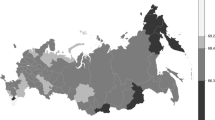Summary
The ACT population has always been considered to be different from that of the other capital cities and from the overall population of Australia, and in many respects this is true. At the same time, however, recent data suggest that the ACT population profile is now converging towards the Australian experience.
The transition point appears to have occurred in the early 1970s, and probably went unnoticed at the time. Signs of a turning-point are now evident in the slowing down of the rates of growth, the increased proportion of elderly persons, the decline in the female labour force participation rates at the younger ages, a convergence to the Australian level in the proportion in high status occupations, and the indication that the ACT is now becoming a centre for health, welfare and other services for persons from the surrounding country areas. From a planning point of view recognition is needed that the ACT can no longer cater solely for the affluent, middle class “normal” nuclear family, and needs to be aware of its role as a provider of services, housing and transport for the growing numbers of elderly and other disadvantaged groups.
At the same time, however, it should be emphasised that the behaviour of Canberra people is not as extreme as some popular myths suggest, particularly with regard to the level of fertility, the incidence of divorce, and the labour force activity of married women.
Similar content being viewed by others
References
AUSTRALIAN BUREAU OF STATISTICS (1981)Child Care Arrangements, Australia, June 1980, Cat. No. 4402.0, Canberra.
AUSTRALIAN BUREAU OF SATISTICS (1982)Census of Population and Housing, 30 June 1981, Summary Characteristics of Persons and Dwellings, Australian Capital Territory, Cat. No. 2442.0, Canberra.
AUSTRALIAN BUREAU OF STATISTICS (no date) Census of Population and Housing, 30 June 1981, Microfiche Cross-classified Tables, Canberra.
AUSTRALIAN BUREAU OF STATISTICS (1983a)Projections of the Population of the States and Territories of Australia 1981–2021, Cat. No. 3214.0, Canberra.
AUSTRALIAN BUREAU OF STATISTICS (1983b)Births, Australia, 1982, Cat. No. 3301.0, Canberra. (And for previous years.)
AUSTRALIAN BUREAU OF STATISTICS (1983c)Divorces, Australia 1982, Cat No. 3307.0, Canberra. (And for previous years.)
CAPTIAL TERRITORY HEALTH COMMISSION (1984) Unpublished tabulations.
FOSKETT, R.A. (1981) “Canberra the maturing city: implications for health plans and policies for the ageing”, Capital Territory Health Commission, Canberra (mimeographed).
FOSKETT, R.A. (1982) “Where have all the children gone? A review of demographic trends in the ACT which will affect planning for the provision of health services and facilities”, Capital Territory Health Commission, Canberra (mimeographed).
HUGO, Fraeme (1983)Interstate Migration in Australia, 1976–1981, Working Paper Series No. 50, National Institute of Labour Studies, Flinders University of South Australia, Bedford Park.
JOSEPHIAN, Virginia (1984) “Divorce in Australia 1971–1981: An examination of period analysis”, inAustralian Family Research Conference Proceedings, Volume 1, Family Formation, Structure, Values, Institute of Family Studies, Melbourne: 295–316.
LEWIS, David (1975) “Primary social networks in Canberra”, M.A. thesis, Department of Sociology, Faculty of Arts, Australian National University, Canberra.
ROWLAND, D.T. (1979)Internal Migration in Australia, Census Monograph Series, Cat. No. 3409.0, Australian Bureau of Statistics, Canberra.
ROWLAND, D.T. (1980) “Demographic changes in the Australian Capital Territory: recent developments affecting primary school enrolments”, inReport to the Australian Capital Territory Schools Authority, Review of Primary Education in ACT Government Schools, Canberra.
ROWLAND, D.T. (1983)Population and Educational Planning. The Demographic Context of Changing School Enrolments in Australian Cities, ERDC Report No. 36, Education Research and Development Committee, Australian Government Publishing Service, Canberra.
SAHA, L.J. (1975) “Primary support in crisis situations: friends and kin in Canberra suburbs”,Australian and New Zealand Journal of Sociology, 11 (3): 18–24.
VINSON, Tony, Victor COULL and Robin WALMSLEY (1984)Beyond the Image. Review of Welfare Services and Policies in the ACT, Department of Territories, Australian Government Publishing Services, Canberra.
YOUNG, Christabel (1985)Exploring the Demography of the ACT, Statistical Appendix to Beyond the Image. A Review of Welfare Services and Policies in the ACT, Department of Territories, Australian Government Publishing Service, 1985.
Rights and permissions
About this article
Cite this article
Young, C. Canberra — The demographic experiment. Journal of Population Research 2, 85–103 (1985). https://doi.org/10.1007/BF03041469
Issue Date:
DOI: https://doi.org/10.1007/BF03041469




